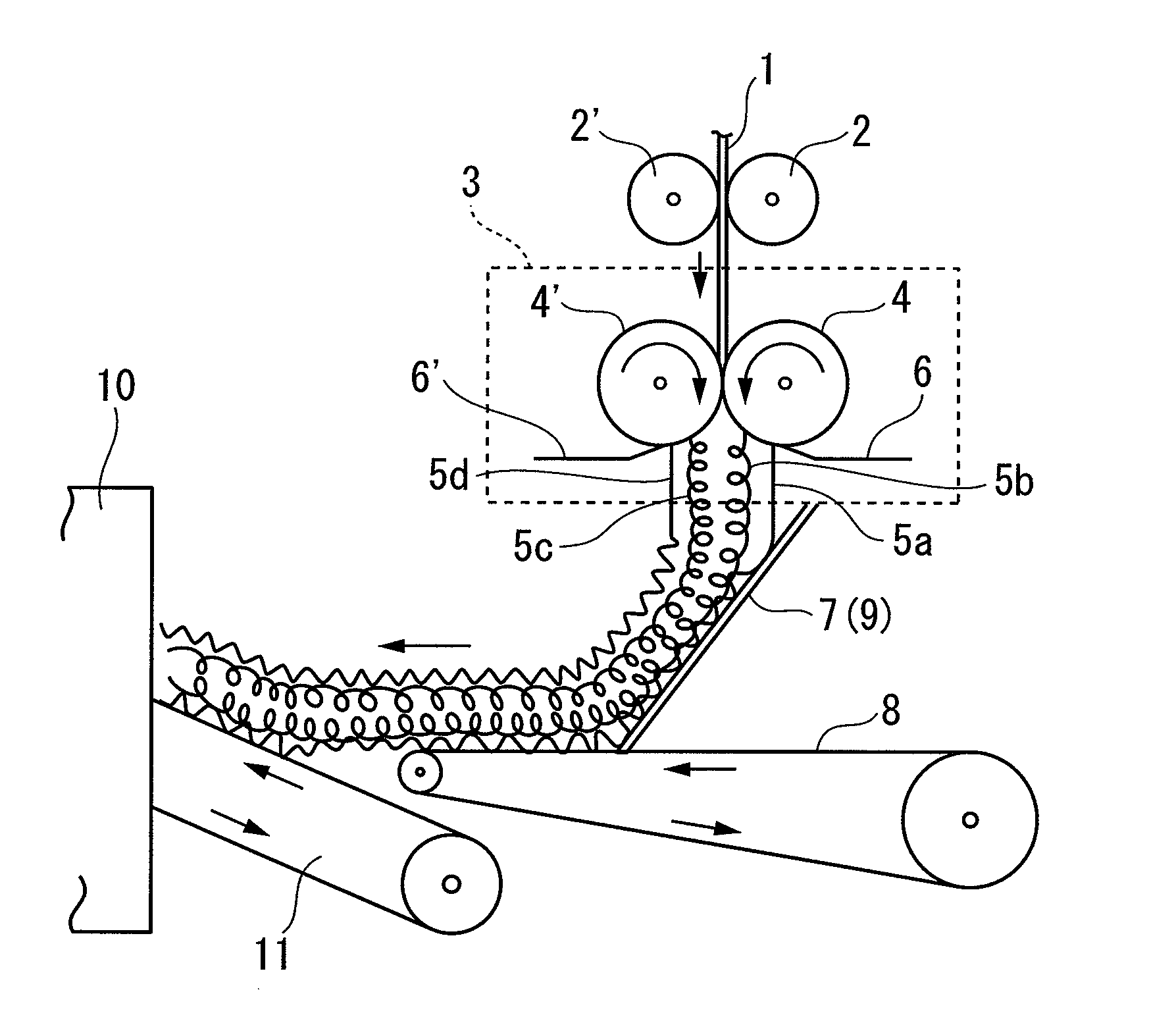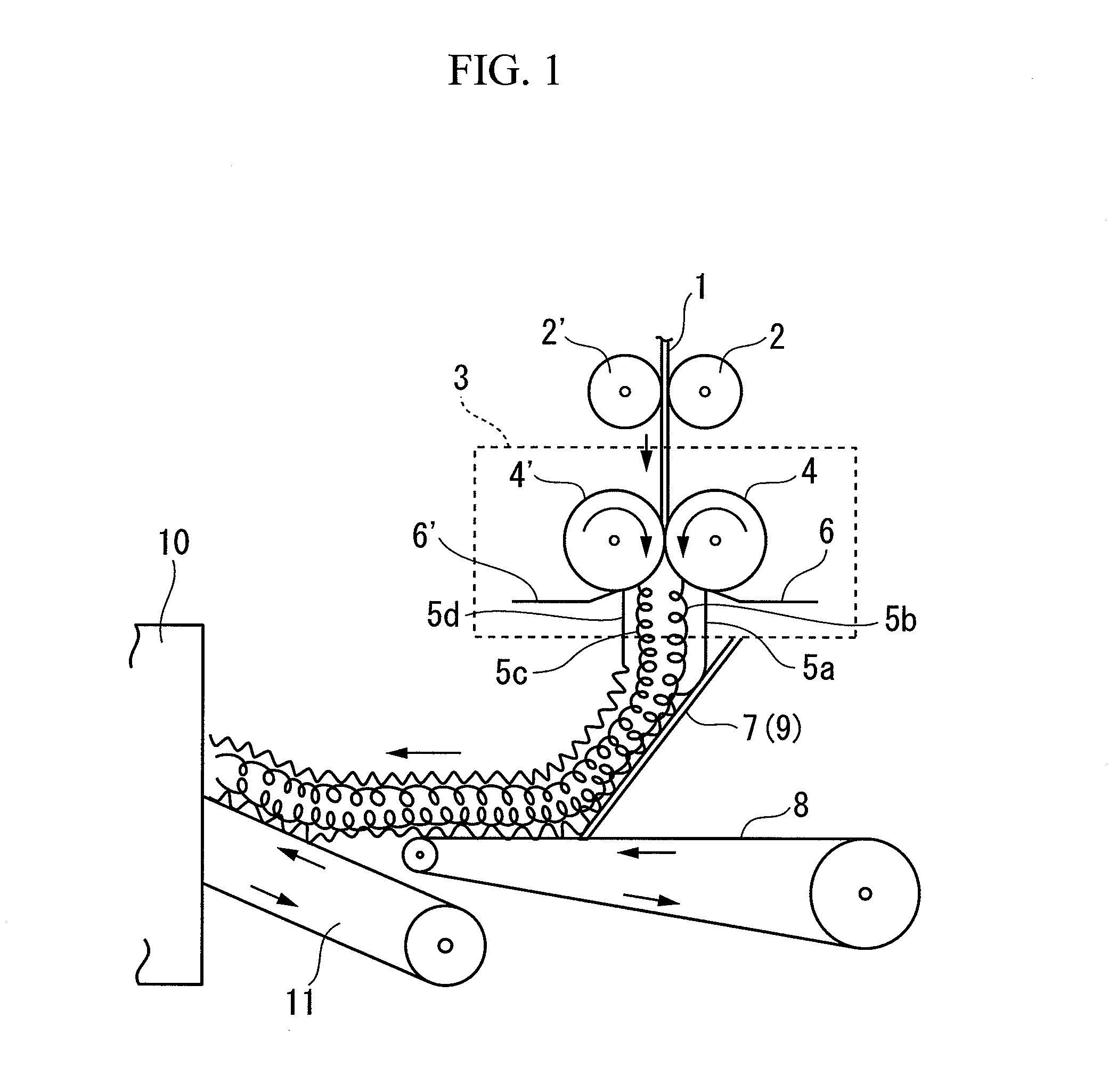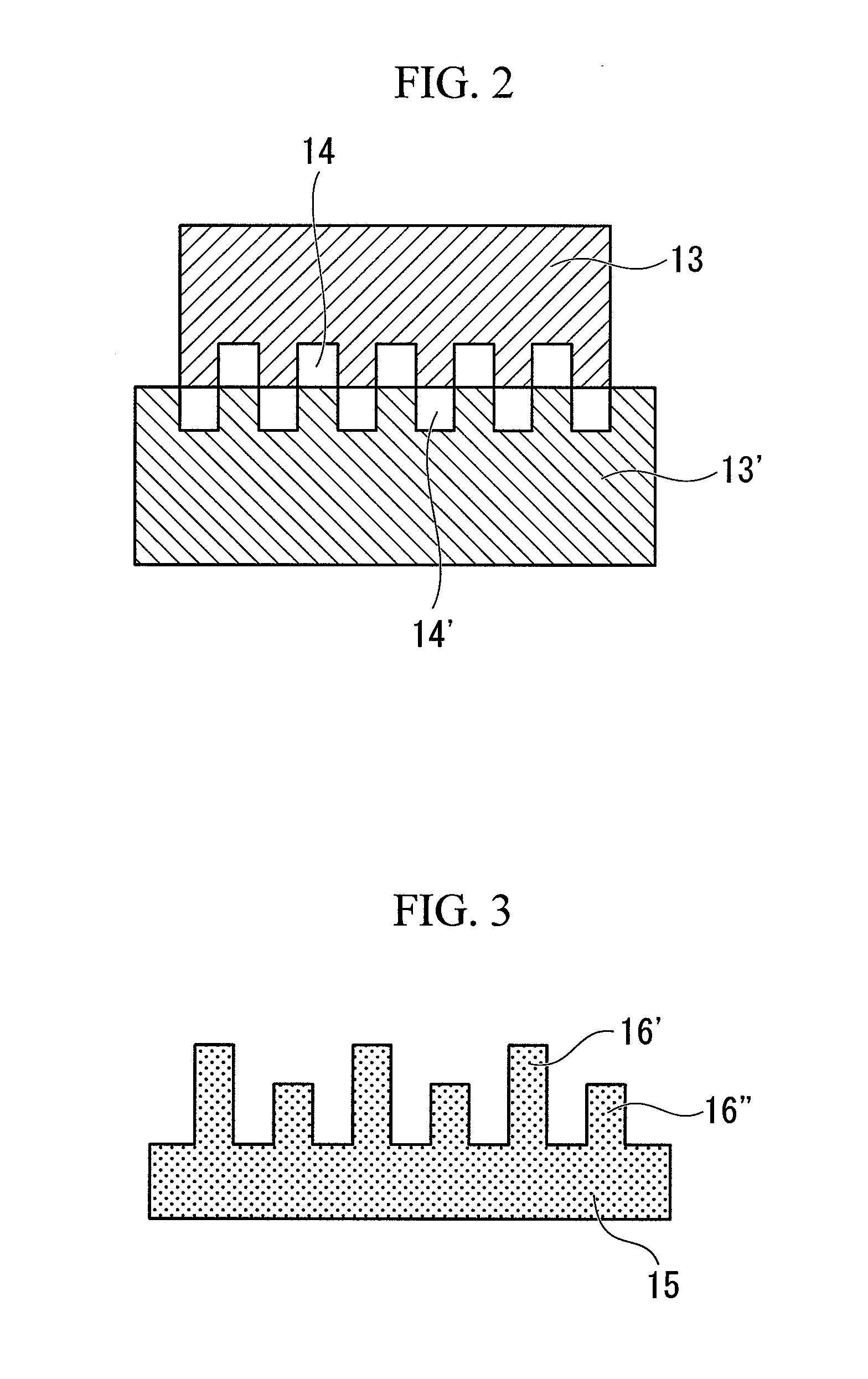Apparatus for cutting and ejecting noodles, and noodle scraper
a technology for scrapers and noodles, which is applied in the field of apparatus for cutting and ejecting noodles and noodle scrapers, can solve the problems of ejected from cutting blade rolls, difficult to continuously operate cutting blade rolls, and difficult to remove noodles that were cut by cutting blade rolls, etc., to prevent a variety of noodles from adhering, increase the distance, and prevent the effect of joining
- Summary
- Abstract
- Description
- Claims
- Application Information
AI Technical Summary
Benefits of technology
Problems solved by technology
Method used
Image
Examples
first embodiment
[0216]FIG. 1 is a side view schematically showing an apparatus for cutting and ejecting noodles related to the present invention, illustrating a step previous to a step of cutting and ejecting noodles, a step after the step of cutting and ejecting noodles, and a state where the noodles are processed and transferred.
[0217]Firstly, a noodle dough is obtained by mixing and kneading general noodle-production ingredients, such as flour or starch, by use of a known method.
[0218]Subsequently, the noodle dough is rolled and passed through gaps of several rolled rolls, and a band-shaped noodle band is obtained.
[0219]The gap between final rolled rolls 2 and 2′ is adjusted so as to form a noodle band having a predetermined thickness.
[0220]The noodle band 1 that was passed through the gap of the rolled rolls 2 and 2′ is passed through a gap between the pair of cutting blade rolls 4 and 4′ of an apparatus 3 for cutting and ejecting noodles.
[0221]Each of the pair of cutting blade rolls 4 and 4′ h...
second embodiment
Modified Example of Second Embodiment
[0494]FIG. 32 is a cross-sectional view schematically showing a modified example of cutting blade rolls that have three depths, and is a vertical cross-sectional view showing the cutting blade rolls in the axial line.
[0495]The above-described second embodiment shows a structure in which the groove sections 41, 42, and 43 are arrayed so that the depths thereof increases in order along the axial direction of the cutting blade rolls.
[0496]In contrast, FIG. 32 shows cutting blade rolls 58 and 58′ in which an arrangement of three different depths of groove sections are different from that of the second embodiment.
[0497]FIG. 33 is a plan view schematically showing a noodle scraper 56 having the scraping tines engaged with the cutting blade rolls shown in FIG. 32.
[0498]FIG. 34 is a view schematically showing a state where the cutting blade rolls 58 and 58′ shown in FIG. 32 are engaged with the noodle scraper 59 shown in FIG. 33, and is a bottom view fro...
PUM
| Property | Measurement | Unit |
|---|---|---|
| depths | aaaaa | aaaaa |
| depth | aaaaa | aaaaa |
| tine-length | aaaaa | aaaaa |
Abstract
Description
Claims
Application Information
 Login to View More
Login to View More - R&D
- Intellectual Property
- Life Sciences
- Materials
- Tech Scout
- Unparalleled Data Quality
- Higher Quality Content
- 60% Fewer Hallucinations
Browse by: Latest US Patents, China's latest patents, Technical Efficacy Thesaurus, Application Domain, Technology Topic, Popular Technical Reports.
© 2025 PatSnap. All rights reserved.Legal|Privacy policy|Modern Slavery Act Transparency Statement|Sitemap|About US| Contact US: help@patsnap.com



